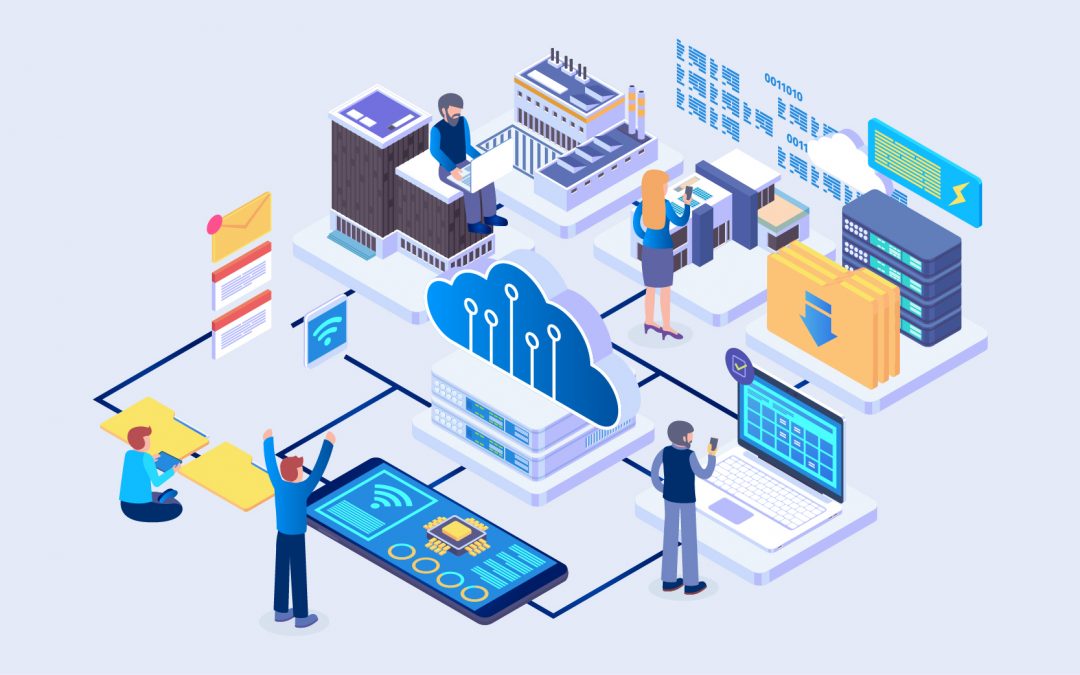Virtual Desktop Infrastructure is something that’s been gaining an ever-increasing amount of traction ever since this pandemic hit and our goal in this article is to shed some light on what it actually is.
What is Virtual Desktop Infrastructure
Virtual Desktop Infrastructure, commonly referred to nowadays as VDI, can be thought of in layman’s terms as the infrastructure through which we can create Remote Virtual Desktops which, of course, have a variety of different uses. This infrastructure essentially allows us to create entire virtualized desktop environments on a single centralized server. There are various different advantages to this particular infrastructure and these advantages are the key reasons why it’s starting to become so commonplace during these pandemic times.
It’s important to highlight that, while VDIs do share quite a lot of similarities with traditional Virtual Machines (VM) the technologies are entirely different and both these things are completely distinct even if they do have certain characteristics that they share between themselves.
How does VDI Work
The functionality of a VDI revolves around providing its end-users with creative Virtual Desktop Solutions. The Virtual Desktop Services that VDI provides are hosted on centralized serves where a variety of different virtual desktop images are installed. Once these images have been installed and are running on the centralized server, they can be accessed and utilized by anyone who’s authorized to access them.
The end-user who’s supposed to be using the VDI is connected to the centralized server that’s hosting the virtual desktops and, as long as this connection is stable, they can utilize these virtual desktops to their heart’s content much like they’d use actual desktops. Of course, the key difference here is that all the processing and grunt work is being done on the centralized server whereas the end-user is simply receiving the outputs and providing the inputs. The advent of VDIs has led to quite a lot of people using Remote Virtual Desktops as their platform of choice since this enables them to work from home in an environment that’s quite similar to what they’d get in their actual workplace.
Why Virtual Desktop Infrastructure
There are various reasons why users would consider VDI and the delightful Virtual Desktop Solutions that this infrastructure has brought on. Some of the more standout reasons are as follows:
- Virtual Desktop Infrastructure enables users to have access to their machine of choice as well as all the files and software within it no matter where they are. As long as there’s stable internet, users can remotely access their virtual desktop at any point in time and use it as they normally do.
- VDI often allows users to enjoy solid performance from their machines. Since all the actual processing work is being done on a centralized server, this server is usually quite powerful and fitted with high-end hardware. Users working via VDIs are then able to capitalize on this high-end hardware whenever they access their virtual desktops remotely.
- VDI also provides much greater security than traditional infrastructure. In a VDI, all the critical data is stored on a single server instead of several different machines that are a part of a network. It’s significantly easier to secure this singular point instead of having to secure the variety of machines that come together to make up a traditional infrastructure.
Benefits of VDI
Moving further, it goes without saying that using VDI to provide Virtual Desktop Services has an array of different advantages and benefits and some of the more noteworthy benefits are:
- Cost saving: Virtual desktops and infrastructures are significantly less costly than traditional ones because they require less physical equipment to setup. Since there’s less equipment involved throughout the whole infrastructure, this also makes maintenance significantly easier as there are much fewer physical aspects of the infrastructure that require maintenance.
- Much easier to manage: It goes without saying that managing VDIs is a much smoother and easier task than managing standard infrastructure. VDIs can often be managed from a single point due to their centralized nature. Another major benefit of their centralized nature is the fact that it’s much easier to push out updates and such within a VDI.
- A great deal of flexibility: One of the biggest benefits of using VDI is the fact that this particular infrastructure provides a ton of flexibility. It’s quite easy for network administrators to simply allocate Remote Virtual Desktops when using VDIs. When using traditional infrastructure, this would be a much more tedious issue as the end-users would require an actual system and this not only takes space but also time to set up.
What is VDI Used For
There are quite a few uses for VDIs but perhaps one of their most essential use-cases is now being highlighted in the times of the pandemic. Basically, VDIs allow users to connect to a company’s network and use it as if they’re within the workplace itself and this is why it has made working from home a completely seamless process that isn’t that different from working from inside the actual workplace.
Another important use-case of VDI is for remote workers who usually have to do tasks like working from the field. Workers who are assigned roles like this almost always need to have a reliable way to access the company’s network and VDIs make this a reality. Through the use of VDIs, even remote workforces can consistently work and remain connected with the company’s network at all times without any disruptions.
Difference between VDI and Virtualization
VDI and Virtualization might sound fairly similar to some but they actually aren’t and this is far from the case. There are certainly similarities between the two technologies but there’s one key difference that sets them apart from one another.
In the case of virtualization, we’re usually referring to hosting a virtual computer within our own system and this can be for a variety of different reasons like testing a new operating system. Software like Parallels are used for this particular task.
In the case of VDI, on the other hand, we’re not really running a virtual machine on a single computer and, instead, are using a centralized server in order to power up a variety of different virtual machines and provide Virtual Desktop Services that are going to share the same network and resources.
Difference between VDI and VMs
VDI and Virtual Machines are also often confused with one another due to their similarities but these two are different things entirely in spite of the traits they share. Virtual machines are essentially the software side solution that enables us to actually create VDIs. VMs do this by allowing us to partition a single physical server into a variety of different virtual servers that can be allocated according to requirements and these are the building blocks of a VDI Remote Desktop itself.
Implementing VDI through Parallels Remote Application Server (RAS)
There are quite a few VDI solutions available but it is important to look at your needs, costings, ease to manage, data security and IT infrastructure needed to implement VDI solution.
Parallels Remote Application Server (RAS) is considered to be one of the best virtualization software as VDI workloads can be quickly provisioned. Parallels RAS is a virtualization solution that enables businesses to publish both applications and desktops to any device using a single license. It is complete, easy to deploy, and cost-effective solution. One of the main features is its ability to publish VDI desktops.
The best feature provided by Parallels RAS is the support for all the major hypervisors (Citrix Hypervisor, Microsoft Hyper-V, VMware ESXi, QEmu KVM with libvirt, Scale Computing HC3, and Nutanix Acropolis) when it comes to virtualization. This features allows flexibility to businesses to adopt virtualization without any worry about vendors.
Additionally, system administrators can also manage existing Infrastructures from the Parallels’ RAS Console as it supports multiple hypervisors under the same infrastructure.
Administrators can also configure & administrate different hypervisors through Parallel RAS Console. Support for multiple OSes is also there under the same pool of resources from different hypervisors. It also allows administrators to:
- Group VM’s based on type of hypervisors
- Deploy VM’s & Servers
- Monitor Resources
- Provide Support
- Manage all connected devices from a single window
Overall, we hope that this article has helped you further understand what Virtual Desktop Infrastructures are and how they’ve started to gain an insane amount of traction in recent times. There are certainly quite a few benefits of using VDIs, especially within workplaces, so it’ll be interesting to see how they’re developed and implemented moving forward.
To learn more about Parallels VDI solution or to schedule a demonstration, please contact us today.





Recent Comments